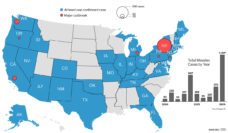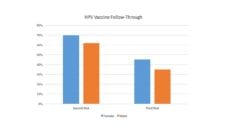Social media has become a haven for vaccine misinformation. Today, 41% of parents say they see anti-vaccine messages on their social media feeds. However, a new study paints a more complex picture.
Researchers analyzed 1.6 million tweets from 300,000 users to characterize vaccine-related trends over the last decade. As seen in the first graph, the number of pro- and anti-vaccine users has increased over time. The spike in anti-vaccine tweets seen on the bottom graph corresponds with the release of an anti-vaccine book and movie. And while more anti-vaccine tweets are circulating now compared to 2010, they are far outnumbered by both pro-vaccine tweets and users.
According to this analysis, pro- and anti-vaccine tweeters exist in separate bubbles. Only 676 of the 300,000 users interacted with those of the opposite sentiment. In other words, vaccine advocates are merely drowning out vaccine denouncers. Very few are engaging others and changing opinions.
As the online chatter continues, vaccines remain effective. The recent measles outbreaks in the United States demonstrate what happens when anti-vaccine messages influence actual behavior.
Databyte via Gunaratne, Keith, et al. “Temporal Trends in Anti-Vaccine Discourse on Twitter.” Vaccine, vol. 37, no. 35, 2019, pp. 4867–4871.














